Consider the oyster.
A burst of salinity, a subtle sweetness, a briny aroma that reminds you of summer breezes and salty air. For oyster lovers, the slip from shell to tongue brings the purest essence of the sea, a taste of the ocean in one perfect bite.
Oysters have long been a cultural and economic feature of South Shore and Cape Cod (Wellfleets anyone?), but on the North Shore, where the softshell clam is the bivalve of choice, not so much.
That may be changing.
Brenden Doyle, owner of the Great Marsh Shellfish Company, has had oysters on his mind for 30 years. He and his father had often discussed the untapped potential for sustainable aquaculture on the North Shore, and when Doyle got out of the Navy in 1994, he pitched the idea of cultivating shellfish in Gloucester. The scheme was shelved after getting a cool reception from the town. After his father died in 2002, Doyle put the notion to rest, but he couldn’t shake the idea that farming oysters could be a successful North Shore venture. When a piece of property became available, he decided to take the leap.
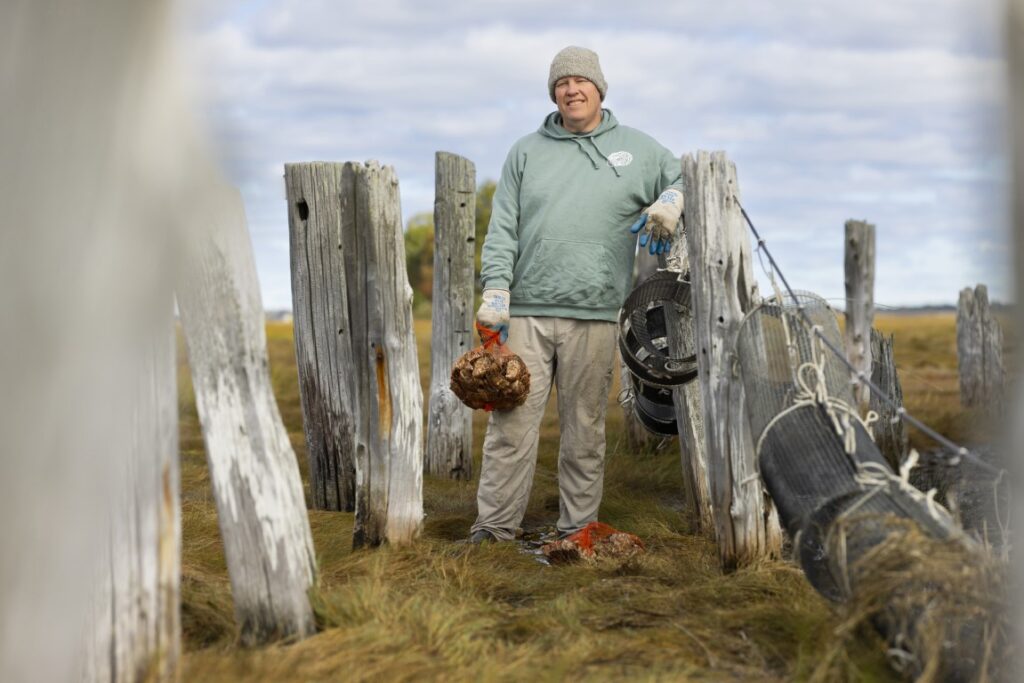
“The guy selling it was surprised. Who buys a swamp?” Doyle says. “But I was all over it.” It took three years and four Town Meetings for the permitting, Doyle says, as local attitudes toward oysters were suspicious at best.
“It is a right-to-farm town that had a previous shellfish/aquaculture lease bylaw on the books, and it still took more than three years to get it done,” he said.
Doyle said a combination of red tape and “social issues,” around oyster farming is the reason for the slow pace of permitting. “The North Shore is clam country,” he says.
That’s an understatement.
The North Shore of Massachusetts is known for its soft-shell clams, or steamers, which are harvested by the millions in the state each year. Local restaurants like the Clam Box, Woodman’s, and Farnham’s serve locally sourced clams dug from the tidal estuaries, but in the last century, harvests were impacted by pollution. Despite cleanup projects by the Ipswich River Watershed Association and the Massachusetts Rivers Alliance, clam harvests are impacted due to overharvesting, shoreline development, and polluting practices, Doyle says.
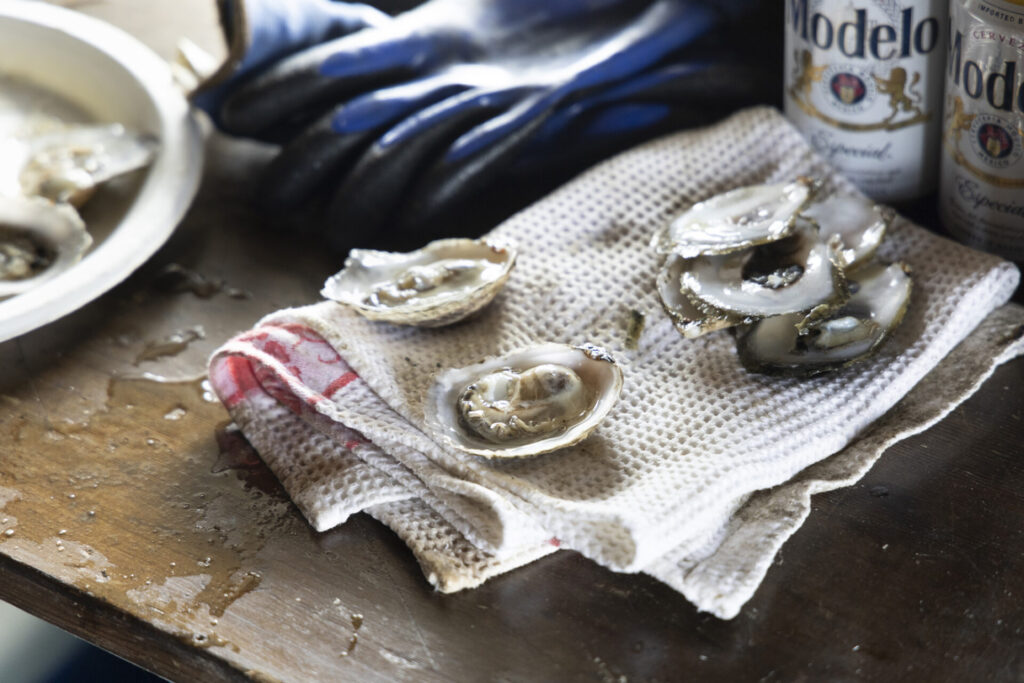
“Those guys are having a hard time. Clams are not as abundant as they were in the past. People are very concerned,” he says.
Liv Woods, executive director of the Massachusetts Oyster Project says, “there is a little bit of competition between the clammers and the folks who want more oysters. They want to be sure oysters don’t impact clamming.”
Doyle adds, “They felt if the flat was taken from public use and transferred to private use, they would probably never get it back again.”
But, Doyle says, his method of oyster farming poses no threat to the clam harvesters. He uses floating cages below the low tide mark, which removes the concern he would be taking over flats used by clam diggers.
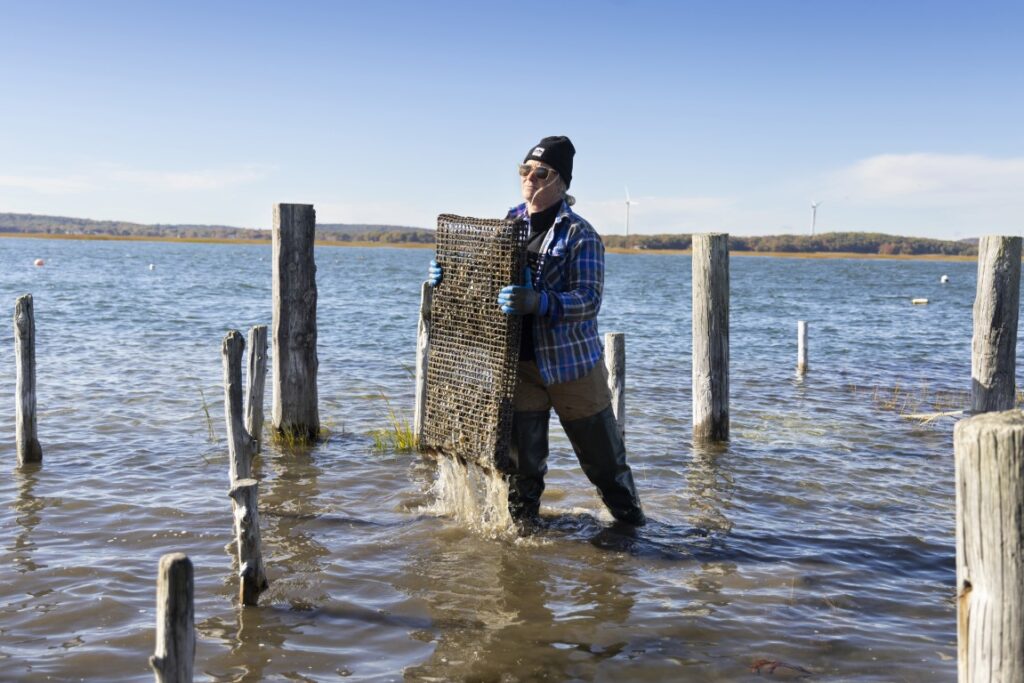
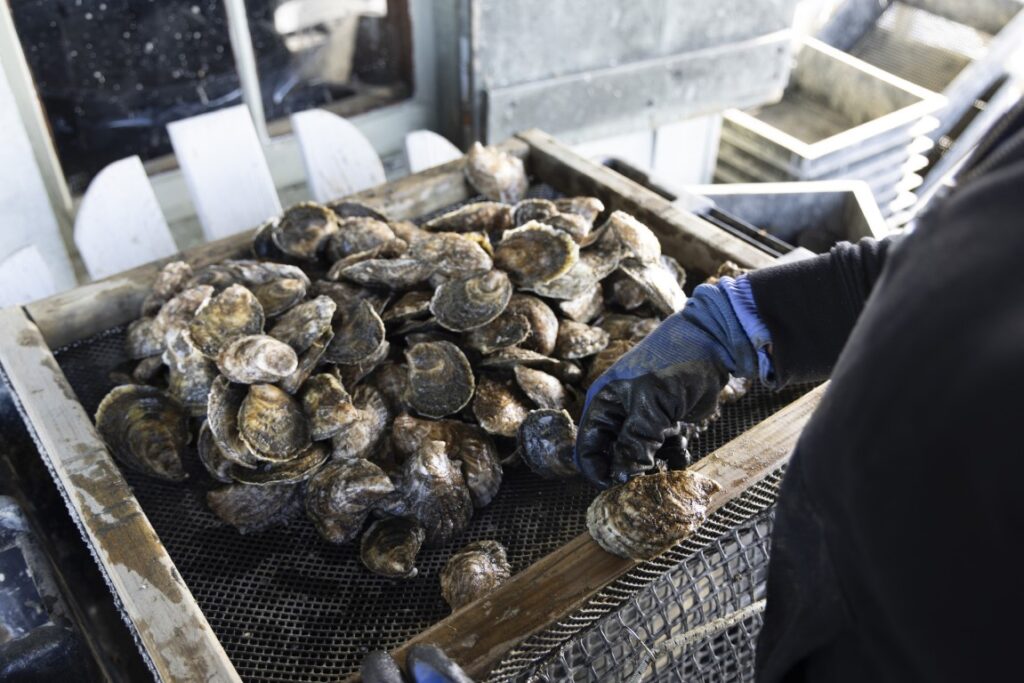
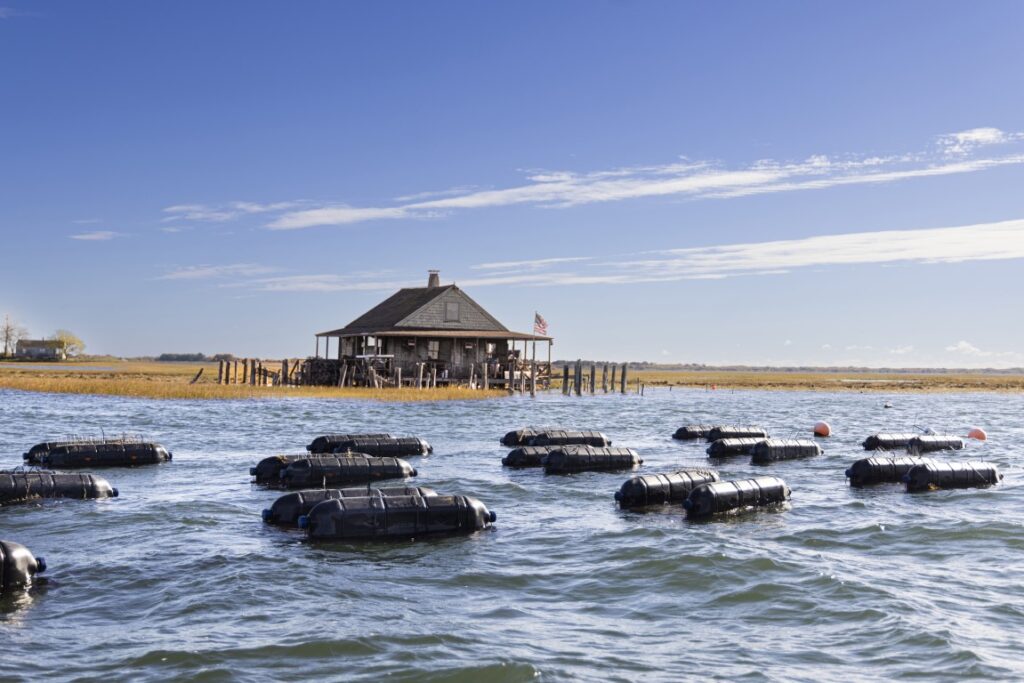
“If you’ve ever heard the term ‘happy as a clam at high tide,’ it means you can’t dig a clam at high tide, you can only dig at low tide,” he said.
Today, four years after planting his first 50,000 seed oysters, Great Marsh Shellfish Company is producing high-quality oysters and quahogs in an area that hasn’t seen commercial oyster farming since the 1800s. Doyle planted more than a million oysters this year and is keeping his fingers crossed for a good harvest.
“It’s a roll of the dice,” he says. “But I’m taking a shot.”
While another company, Mud Creek shellfish farm, recently received permits in Rowley, oyster farming is still an outlier on the North Shore. Owner Dan Terry was inspired by Doyle’s efforts, he says, and hopes people will welcome another small, green business in town.
“I think people are coming around to the idea, as more people become educated on the value of having aquaculture farms in the area, not only in regard to bringing in money to the local economy, but also improving the estuary and ecology by cleaning up the water,” he says.
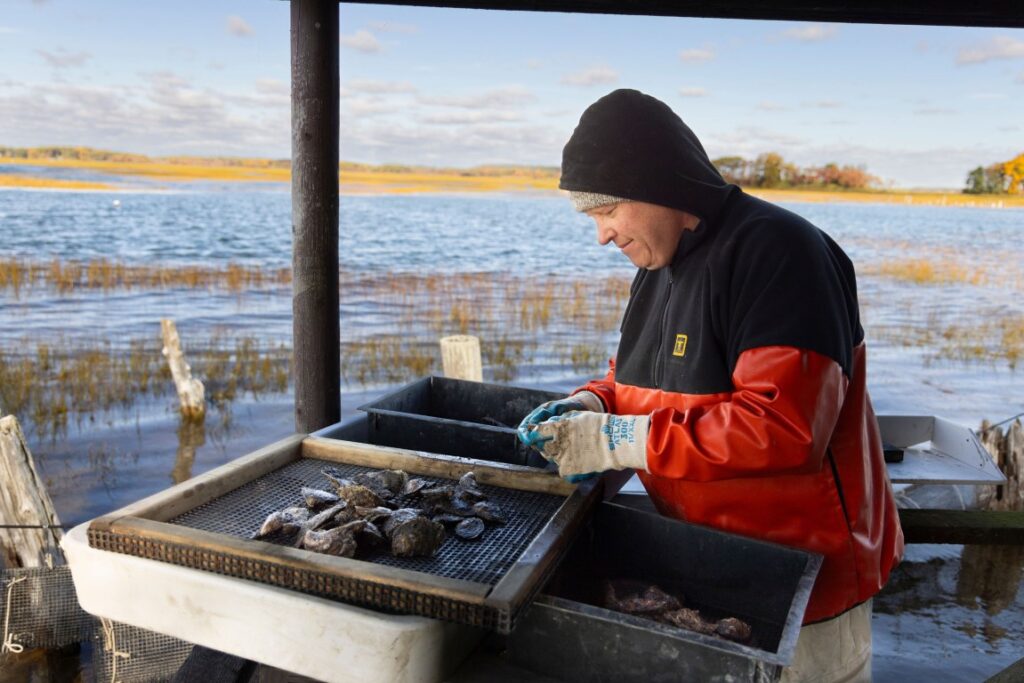
Because oysters filter water through their bodies, sucking up algae and nutrients, they improve the quality of the water around them, says Woods. They also prevent coastal erosion and flooding by forming reefs that serve as protective barriers.
“People don’t realize that,” Wood says. “There is a lack of awareness about their role in water quality. They filter 40 to 50 gallons of water a day. An oyster farm can play a role in getting the water to a healthier place.”
So oysters are good for the water and the environment. And, perhaps even more important, North Shore oysters taste good. Just like wine grapes pick up flavor from their environment, so do oysters. The fact of being in the Great Marsh gives Doyle’s oysters a light and bright, “very brine forward” flavor, with vegetative notes and a clean finish, he said.
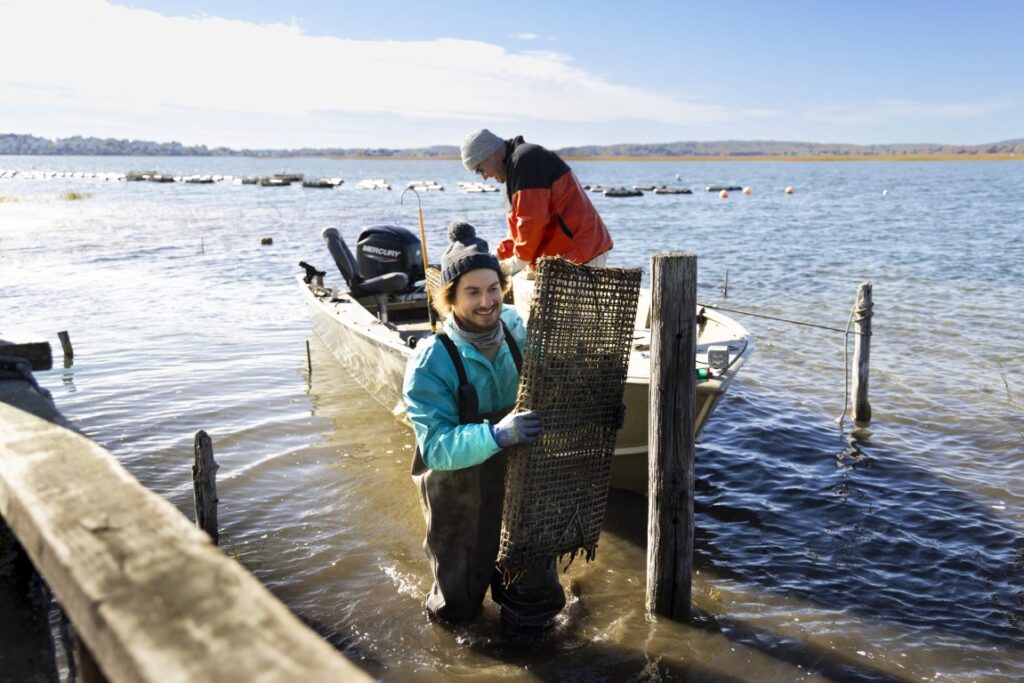
“I’ll put my oysters out there for the Pepsi challenge against any other oyster,” Doyle says. Rose Rome, marketing director for Intershell International, a seafood wholesaler in Gloucester, thinks people are warming up to supporting local oysters.
She supports Great Marsh oysters for their taste, freshness, and high quality. Some area restaurants are trying Doyle’s oysters and liking what they find, she says.
“The quality of this oyster is very comparable to a Damariscotta oyster, those really nice oysters from Maine,” Rome says. “His are a very high-end oyster for sure. Not the briniest oyster in the world, but personally, I really love them.”
So, how long before North Shore oysters are a regular menu item in local restaurants? Terry thinks it will be another year and a half to two years for his oysters to make it to market size. “I have a bit of a ways before I get to the point where I’m actually making money,” he says.
Doyle, too, has yet to become profitable. But he is confident North Shore oysters have a future. “These oysters are the best in the world,” he says. “There’s been a lot of red tape, but as people become more informed, it will be easier for others in the future.”

